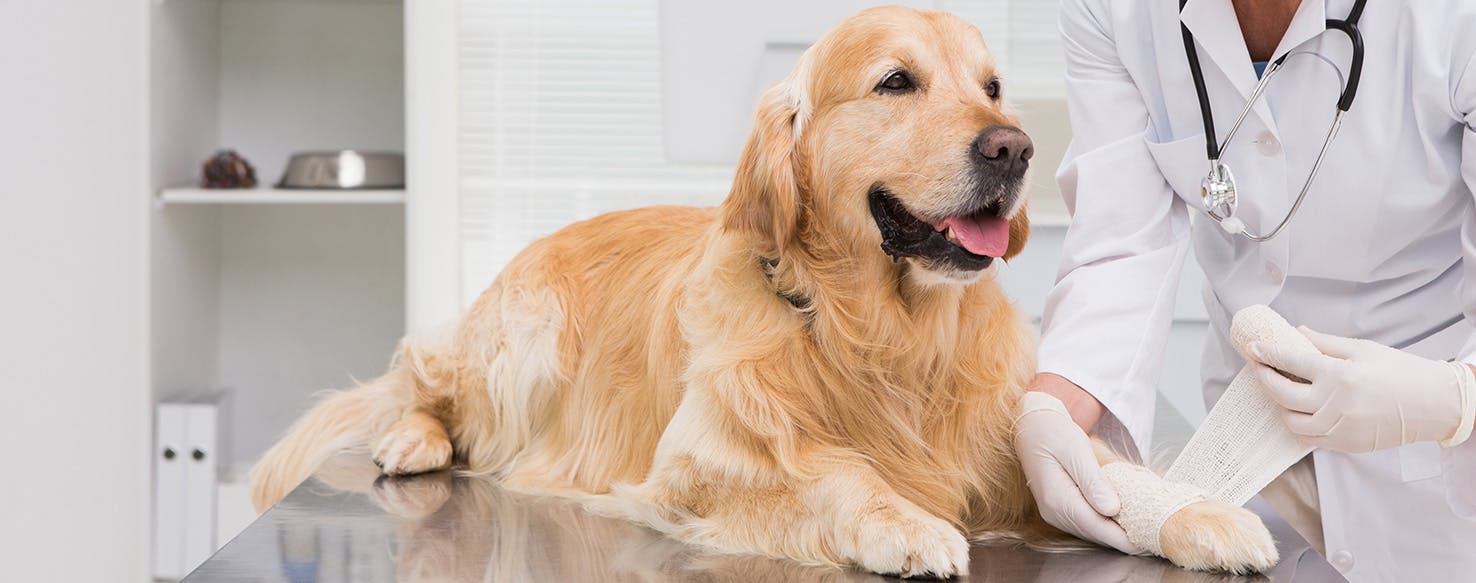After taking your pup to the vet for stitches resulting from cutting themselves while they were running around in the backyard, you bring them home with a bandage covering the wound. The bandage is designed to protect the wound and keep it clean while it heals. There are several things you should be doing to care for the bandages to ensure your pup makes a successful recovery.
The Basics
#1. Snug, But Not Too Tight
If for any reason the bandages are too tightly wrapped, such as on a leg, the excessive pressure can cut off the blood circulation to the wounded area. The best way to check this is to take a look at your dog's toes. In most dogs, the 3rd and 4th toes (the middle ones) should be touching each other. If the bandage is too tight, it can lead to swelling in the toes to the point at which these toes are no longer touching each other. In this case, you need to gently reduce the pressure while still preserving the protection offered by the bandage.
#2. Keeping the Bandage Dry
It is vital that you keep the bandage as dry as possible. There are two reasons for this. First, a wet bandage and wrappings can swell, putting pressure on the wound that can cut off circulation and cause the same problems listed above. Secondly, whether the bandage is soaked with water, urine, dew, or rain, it creates the perfect breeding ground for a host of bacteria. This can lead to a serious infection that can result in the loss of the limb or death. Keep the bandage dry by covering it with a custom cover or a plastic bag when your dog needs to go outside, but be sure to remove it when they come back in.
#3. Keep the Bandage in Place
Over time, it is quite possible for the bandage to slip and no longer be properly covering the wound site. This is especially the case when the bandage is located on a leg or the abdomen. Slippage can not only expose the wound, but can lead to bandages that bunch up and cause other problems. Chafing and rubbing that leaves raw spots on your dog's skin will require further treatment.
#4. Keep Your Dog from Chewing the Bandages
Dogs generally do not like having any part of their body wrapped in anything--including bandages-- so will often try to chew them off. If you allow this to go on, your pup may end up destroying the bandage and cause damage to the healing wound that requires another trip to the vet. There are several ways to keep your dog from chewing the bandages, such as a protective sleeve you can get from your vet, a sock that can be used to cover the affected area, or the infamous "cone of shame" or plastic funnel-shaped collar. There are also several anti-bite sprays you can buy that can be applied to the bandage. Be sure to talk to your vet about using these before trying them.
#5. Change the Bandage Regularly
Your vet will tell you how often the bandages will need to be changed. This may be on a daily basis or once each week, based on the reason why your dog has bandages in the first place. However, if you notice any of the above signs, you may need to change them more frequently. The same applies if you notice any seepage or wetness showing through the bandage, detect a foul odor, or if it has become overly soiled.
Good Bandage Care is Essential
If for any reason you believe there is a problem with your dog's bandages, be sure to call your vet immediately. If it happens to be after hours, take your dog straight to the nearest animal emergency animal hospital to have the wounds checked and new bandages applied. There is a science to taking care of bandages on your dog and you play a major role in making sure your dog enjoys a full and successful recovery.

